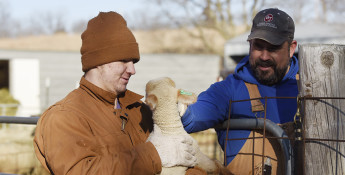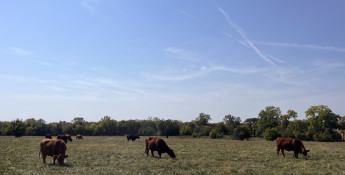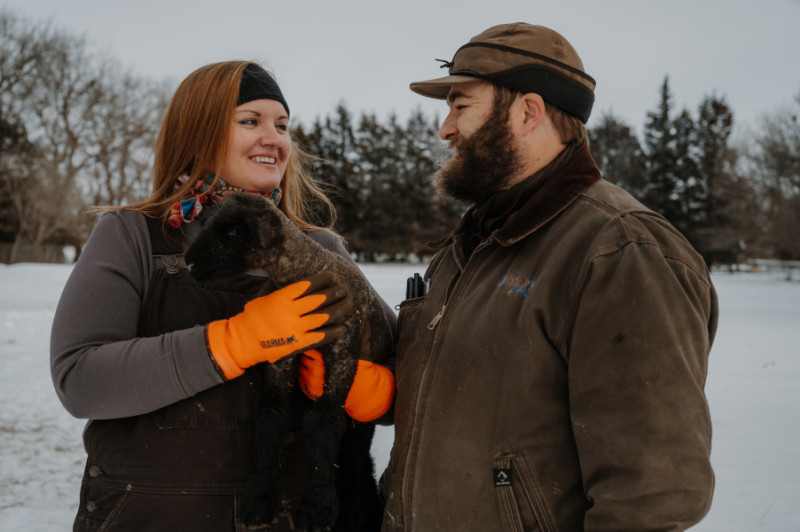By Sheridan Wimmer on October 23, 2024
Clay County farm family cares for lambs in cold temperatures
Through Kansas winters, James Brothers Club Lambs raises top-tier show sheep, blending tradition, expertise and care
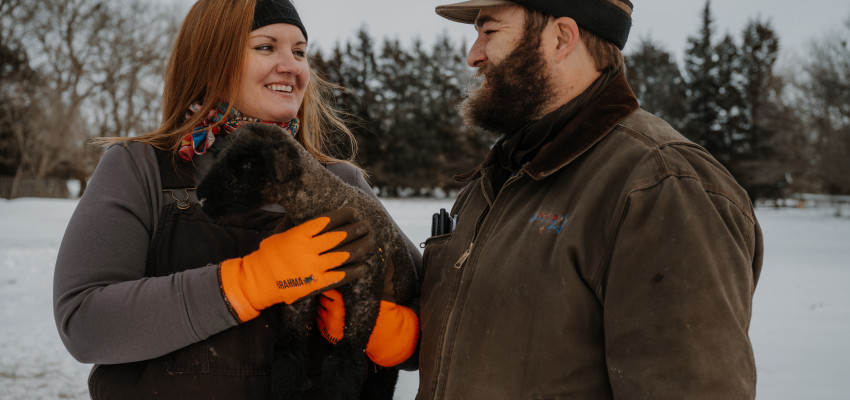
In 2024, the National Weather Service reported wind chills as low as minus 34 degrees early in the morning on Jan. 13, which were the coldest wind chills since 2022. In many areas of the state, temperatures didn’t get above 10 degrees Jan. 13 through 15. But farmers like Lon James were out in the cold tending to their livestock.
Sometimes we wonder why we live in a state where the air hurts our faces — when temperatures drop below freezing and wind chills reach minus 30 degrees or colder. We bundle up, check the roads for icy conditions and try to keep our pipes from freezing. Most of us enjoy a fireplace or an otherwise heated home and workplace on days like these, but ranchers like the James family in Clay County have animals to care for, so they brave the elements to ensure the safety of their livestock.
FROM 4-H TO FAMILY LEGACY
Lon and his twin brother, Loy, started raising sheep 40 years ago at James Brothers Club Lambs in Clay Center. What started as a 4-H project has turned into a company dedicated to producing high-quality show animals. Today, Lon and his wife, Pat, manage the operation along with their son, Taylor, and his wife, KaCee. Lon and Pat also have another son, Ethan, who lives in Baldwin City with his wife, Katie, and their two sons, Carson and Kohen. Although Loy is no longer involved in the operation, the name James Brothers stuck.
Like many farmers and ranchers, Lon and Taylor have backgrounds in livestock judging, which influences the way they talk about sheep in their cadence, flow and terminology.
“What we strive for in our show lambs are lambs that are structurally sound and very correct,” Lon says, sounding like he is delivering a set of reasons to competition judges. “They need to have eye appeal and style and balance. Level in their design down their top and square out of their hip. We need them on good feet and legs.”
Lon was a livestock judger in college, first at Cloud County Community College in Concordia and then at Kansas State University. Taylor judged at Butler Community College in El Dorado, then K-State.
“I was on the last national championship livestock judging team at K-State that Dr. Bill Able coached in 1983,” Lon says. It’s clearly a proud memory for this humble man.
The father-son team has seen many changes in the industry, and combining Lon’s experience with Taylor’s new ideas creates an atmosphere any family who works together can understand.
“Working together can be challenging,” Lon says of collaborating with his son. “I’m a bit set in my ways, and I want things to be done correctly, but what KaCee and Taylor provide is really beneficial.”
The respect Taylor and KaCee have for Lon and his expertise is apparent as they note his vast knowledge about sheep.
“Growing up, dad was just getting out of raising hogs,” Taylor says. “He suffered through high interest rates and the farm crisis of the ’80s. He does things as economically as he can, and he knows a ton about sheep and good stock.”
“Lon has such a good eye for genetics and how to breed,” KaCee, who was also raised showing sheep and is currently a doctoral student in agricultural education at K-State, says. “While Taylor and I can manage on our own, we will always value his knowledge because he’s raised sheep for so long.”
MARKETING AND MASCOTS
Marketing sheep can take many forms. While commercial operations typically breed hybrid or crossbreeds with the goal of high-quality meat or wool, show sheep are raised to catch a judge’s eye in a 4-H or FFA judging ring or for breeding purposes.
At the James’ farm, they primarily raise Blackface sheep with Hampshire influence, breeds that are great for show rings due to their appearance and carcass merit, which is based on factors such as yield and quality grade.
KaCee is particularly drawn to one sheep she’s lovingly named Veronica.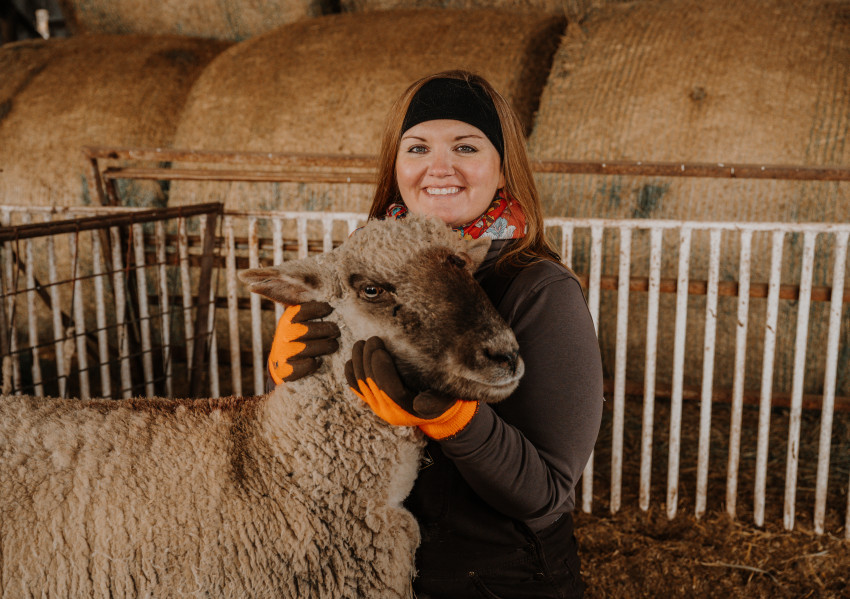
“Veronica is my favorite for a lot of reasons,” she says. “First, she’s a survivor. When we got her, I was an FFA advisor and high school agricultural education teacher in southeast Kansas. Veronica snuck her way into the feed room and overate, as sheep are known to do if they’re given free rein.”
Veronica was taken to a veterinarian who administered an activated charcoal product to soak up the toxins she ingested from her trip to the sheep buffet. She made a miraculous recovery and continues to be the mascot for James Brothers Club Lambs, donning Santa hats and always getting preferential treatment from KaCee.
In addition to a favorite sheep, the James family has a favorite breed of dog: border collies.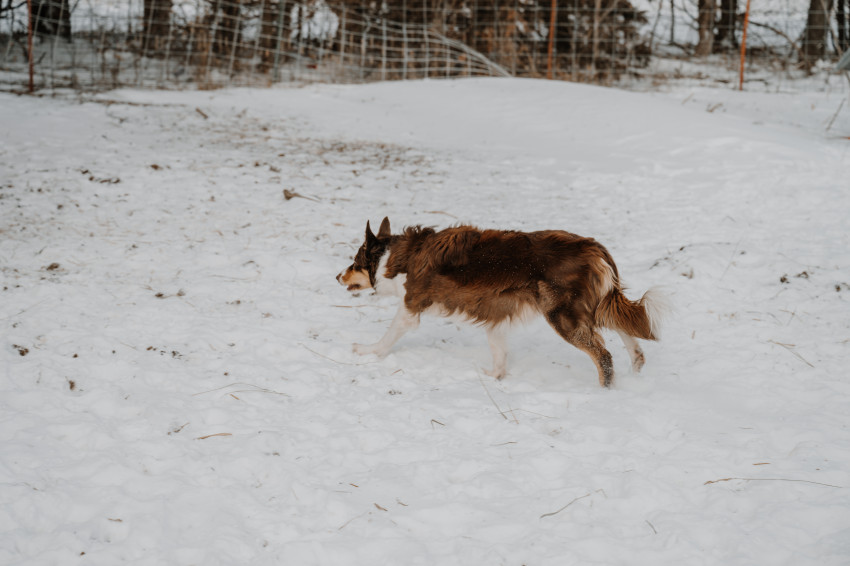
“We have always had and will always have border collies,” Taylor says. “Ever since we raised sheep, our border collies through the years are always the No. 1 workers on the farm.”
Today, their border collie, June, is busy herding the flock. She is truly a hard worker.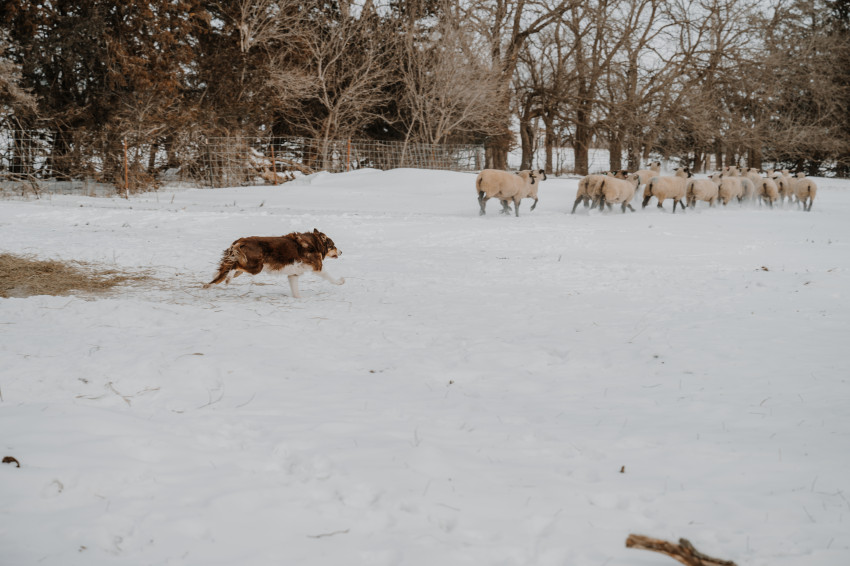
WELCOMING NEW LIFE
The James family starts the process of raising lambs in the summer. Sheep have an average gestation period of around 147 days, which means lambs are born in the dead of winter.
“It all starts in August, when we artificially inseminate the majority of our flock,” Lon says. “The rest of the ewes are bred through natural service with a ram. Our ewes will then lamb in January.”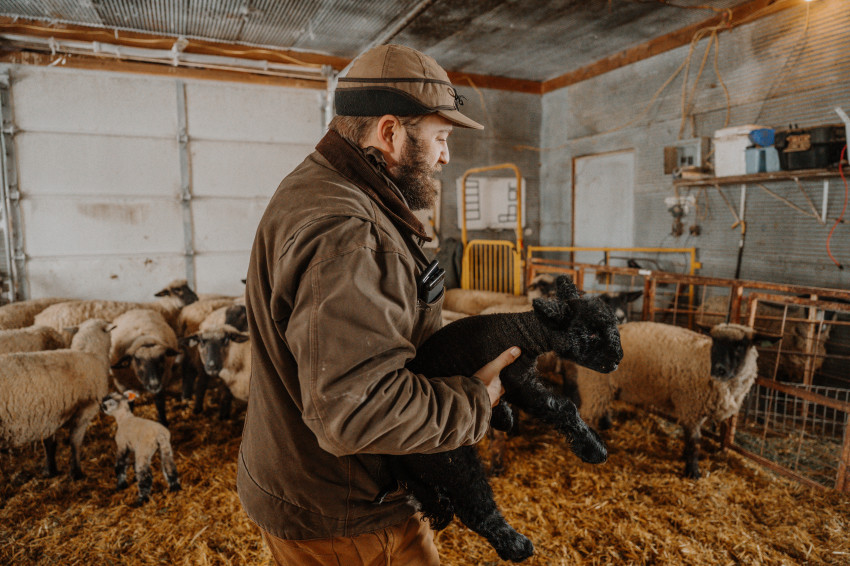
The use of artificial insemination (AI) has been a practice in livestock herds for more than a century. This reproductive technology’s process is similar to the process of intrauterine insemination in humans, where semen is collected from a male and introduced into a female’s reproductive tract. The science has advanced livestock breeding and management by allowing for genetic improvements, reduced disease and health issues, and enhanced productivity.
When the ewes are ready to lamb, they are put into a building where they can be monitored before, during and after birth. Even though the temperatures outside aren’t usually ideal in January, the lambing barn is a sanctuary of warmth.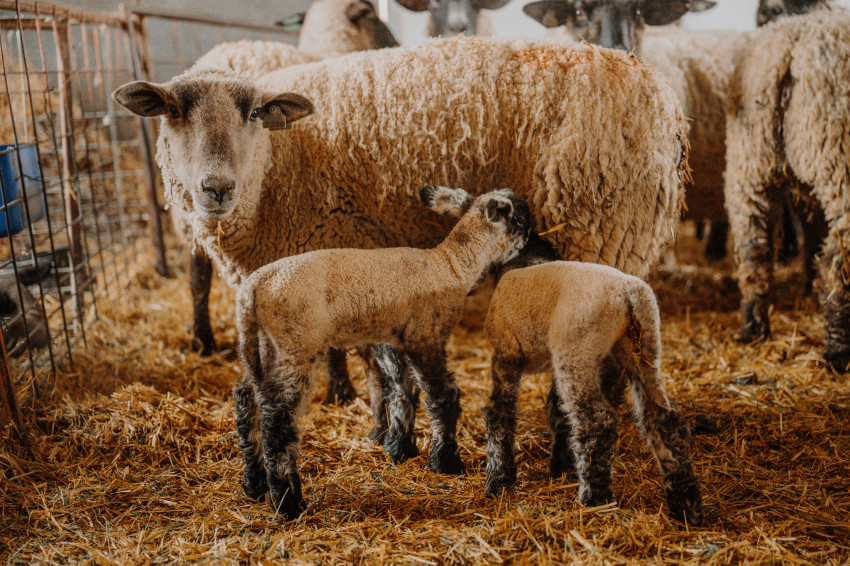
“Our lambing barn has about six inches of insulation in the walls and about 12 inches in the ceiling,” Lon says. “If I keep around 35 to 40 ewes in there, when it’s zero degrees outside, it’ll be 50 degrees in the lambing barn, just by the body warmth of the ewes.”
Inside the lambing barn, separate pens line each side with a larger open area in the middle. The pens (also called lambing jugs) provide the ewes with a safe, comfortable place to lamb — like having their own hospital room. The pens have fresh hay, water and heat lamps for extra warmth. Newborns snuggle up next to or stand close to their mom, not wanting to be too far away from her milk.
For the most part, the ewes at James Brothers Club Lambs don’t need a lot of assistance lambing, but Lon likes to be hands-on during the process.
“If I’m there, I will deliver every lamb I can for several reasons,” he says. “The main one is so I know they’re safe and I know they’re alive. We drench the baby with colostrum from the ewe, and we can check the ewe’s milk to make sure it’s in good shape.”
Drenching is a term used in animal husbandry that refers to administering liquids orally to the lambs. This ensures the lamb gets that essential colostrum to help it thrive.
“You can’t find anyone who wouldn’t say bringing new life into the world is a rush,” Taylor says. “Seeing a lamb from when it was born to seeing it two weeks after it was born and how good of a sheep it is, and that translating into a win at the county fair or the state fair — it’s cool being able to see the product you started, how it grew and seeing it succeed.”
“I love lambing,” KaCee says as she holds up a lamb that seems to be smiling. “Watching these ewes be good moms and hearing the low-pitched bleat they make to their babies is so sweet.”
LAMB CAM
Lambing inside a barn provides protection from the bitter temperatures, allows the ewes and the newborns to bond and reduces stress. It also allows the James family and their customers to watch from anywhere.
“KaCee got us a lambing camera for Christmas one year, and it’s been a lifesaver,” Lon says. “We can give our customers the codes to watch the lamb cam anytime. We’ll get calls at 1 a.m. to tell us we need to get out to the lambing barn because a ewe is having a baby. It’s been a great tool for us to always monitor the ewes and lambs.”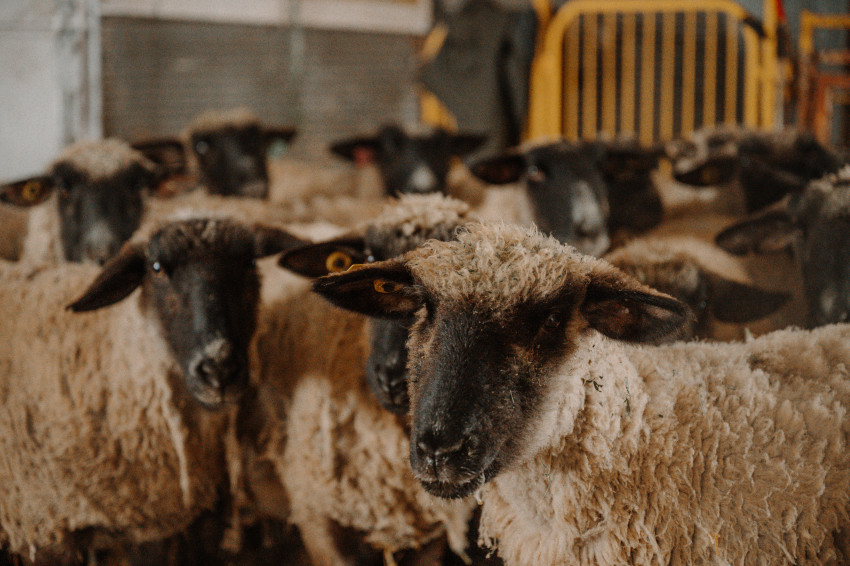
While working with family and harsh winter conditions can come with challenges, the James family’s dedication to their livestock is unwavering. They are proud of their product and enjoy seeing their customers succeed — making sure to attend as many livestock shows as possible and even going as far as Wyoming to see their sheep in the show ring.
The Kansas winter air may hurt our faces, but when you’re in the lambing barn, your face is aching from smiling so much as you see the healthy, warm lambs. We’ll stay in Kansas.
Learn more about James Brothers Club Lambs at: www.facebook.com/JamesBrothersClubLambs


